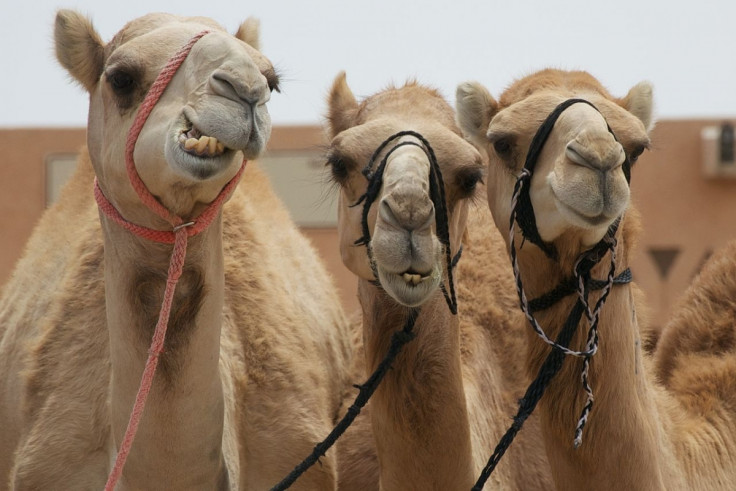75% of Saudi Camels Carried Deadly Mers Virus for Two Decades

The coronavirus responsible for Middle East Respiratory Syndrome (Mers) has been prevalent in Saudi Arabian camels for at least two decades, according to new research.
Mers is a serious viral respiratory illness and according to the World Health Organisation, it has been identified in 182 people and killed 79 since 2012. Most infections have occurred in Saudi Arabia, yet the origin of the disease has remained unclear.
In the American Society for Microbiology journal, it has been revealed Mers-CoV is widespread and affects an estimated three-quarters of the camel population.
W Ian Lipkin, of Columbia University New York, said: "Our study shows the Mers coronavirus is widespread. Adult camels were more likely to have antibodies to the virus while juveniles were more likely to have the active virus.
He added: "This indicates that infection in camels typically occurs in early life, and that if people get the virus from camels the most likely source is young camels."

Experts have focused on camels and bats as the source of the illness. The first known human case of Mers was in a Saudi Arabian man who had four pet camels.
It is thought that the virus is spread by respiratory secretions, although whether camels are potential reservoirs for human transmission is not yet confirmed.
Lipkin added: "Our findings suggest that continuous, longer-term surveillance will be necessary to determine the dynamics of virus circulation in dromedary camel populations."
In the study, investigators from the United States and Saudi Arabia conducted a comprehensive survey of dromedary camels throughout Saudi Arabia. They collected blood samples, as well as rectal and nasal swabs from camels, sheep and goats last November and December.
The blood samples were tested for antibodies reactive with Mers-CoV, and the swabs and blood for active virus. Researchers also analysed archived blood samples from dromedary camels, taken between 1992 and 2010.
Overall, 74% of camels sampled countrywide harboured antibodies to Mers-CoV. More than 80% of adult camels throughout Saudi contained antibodies to the virus, while in camels age two or younger the prevalence ranged from 90% in the east to 5% in the southwest.
In addition, antibodies to the virus were seen in camel serum samples dating back to 1992, which strongly suggests that either Mers-CoV or a closely related virus has been circulating in animals in the country for at least two decades.
The researchers also found that active virus was frequently detected in nasal swabs in 35% of young camels and 15% of adult camels countrywide. It was less frequently found in rectal swabs and not in blood, indicating that the virus most likely is spread by respiratory secretions.
Lead authors for the paper were Abdulaziz Alagaili of King Saud University and the Saudi Wildlife Authority in Riyadh and Thomas Briese of Columbia University.
© Copyright IBTimes 2025. All rights reserved.






















